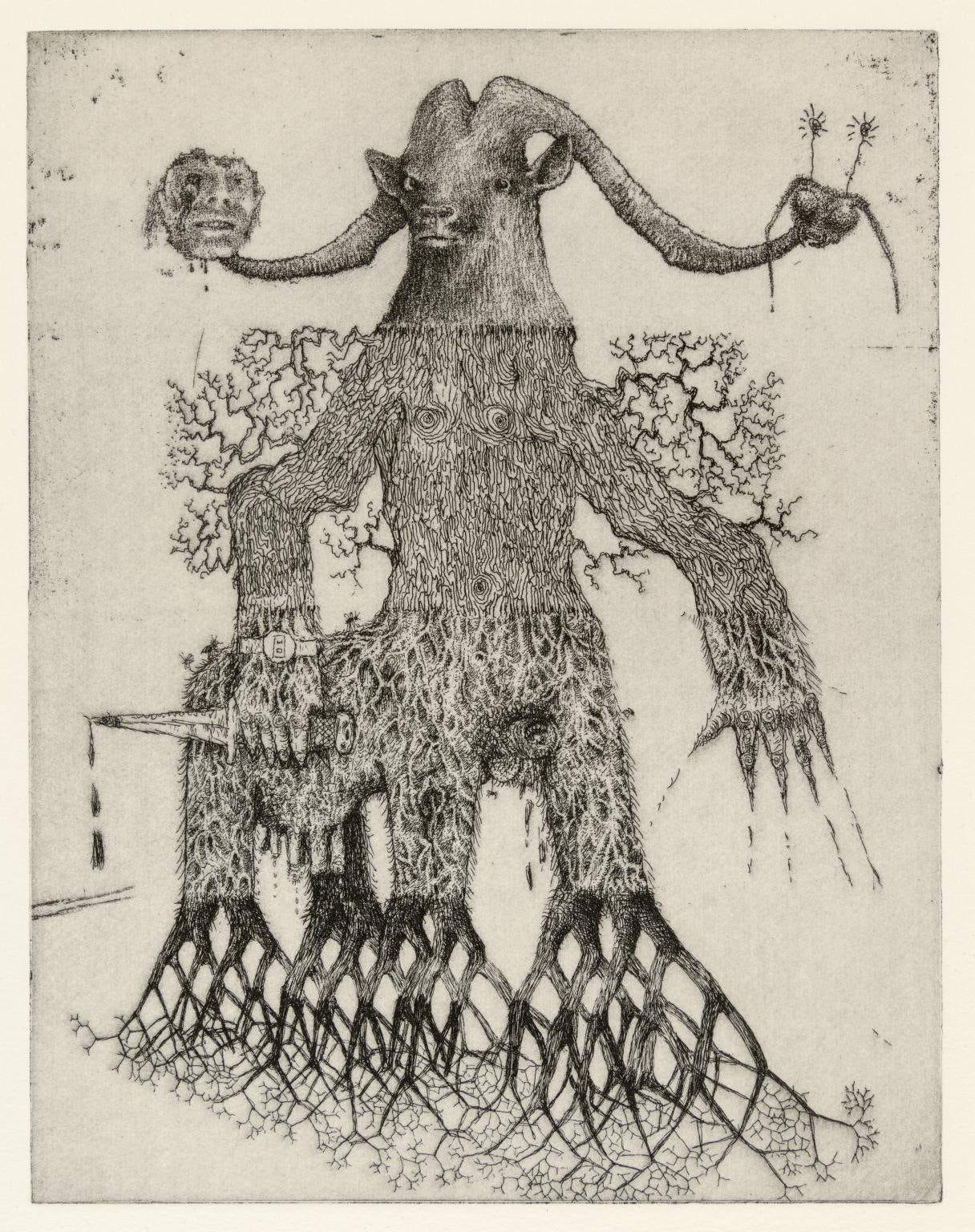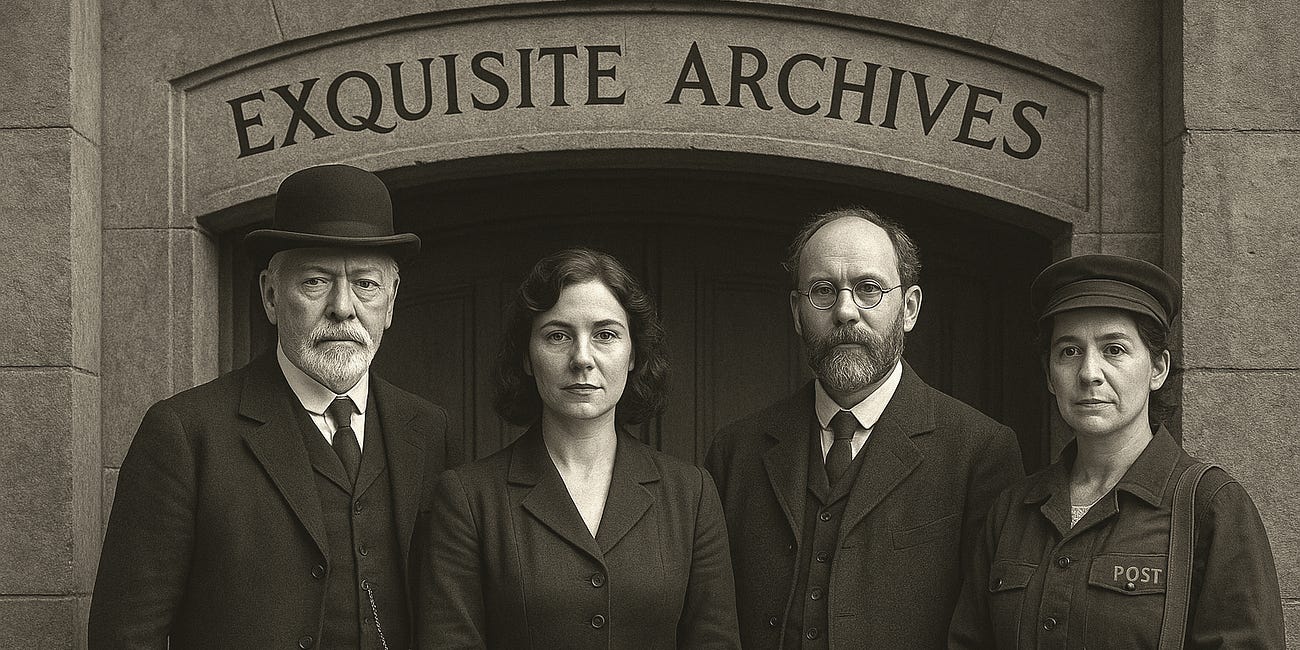No. 14 - The Exquisite Family Records
Exquisite Corpse/Cadavre Exquis: Concept and Inspiration

This is one of the opening chapters of the manuscript I am working on which will hopefully become a book so there are references to ‘the book’ in this article. I am also thinking of it as a possible installation work as well. More on that eventually.
The Exquisite Family Records
Concept:
This is a novelistic record composed of interconnected short stories, inspired by the surrealist game The Exquisite Corpse.
The Exquisite Corpse, also known in French as Cadavre Exquis, is a collaborative game or technique rooted in Surrealism, where multiple participants contribute to a collective creation (usually a drawing or text) without seeing the previous additions. This process results in unexpected and often bizarre combinations of imagery or text. The goal is to create a collective, surprising, and sometimes absurd work of art.
The ‘game’ was invented in 1925 in Paris by the surrealists Yves Tanguy, Jacques Prévert, André Breton and Marcel Duchamp. The name ‘cadavre exquis’ was derived from a phrase that resulted when they first played the game, ‘le cadavre exquis boira le vin nouveau’ (‘the exquisite corpse will drink the new wine’).
Key Features:
Collaboration: Multiple individuals contribute to the artwork or text.
Unseen Contributions: Participants are unaware of what the others have added.
Surrealist Origins: The technique emerged from the Surrealist movement as a way to explore the unconscious and embrace chance.
Spontaneous & Unexpected Results: The final product is often surprising and reflects the collective creativity of the group.
Multiple Formats: Can be applied to drawing, writing (poems, sentences), and even collage.
How it Works (Example of a Drawing):
Folded Paper: A piece of paper is folded to hide portions of it.
First Contribution: The first participant draws the head of a figure (or starts a sentence).
Concealment: The paper is folded to hide the first contribution, leaving only a small part visible for the next participant.
Subsequent Contributions: The next person draws the torso (or continues the sentence), followed by the legs, and so on.
Revelation: Once everyone has contributed, the paper is unfolded to reveal the complete "exquisite corpse" – a unique and unexpected creation resulting from the collaborative process.
In essence, The Exquisite Corpse embodies the Surrealist ideals of exploring the unconscious, embracing chance, and stimulating creative collaboration to produce surprising and unconventional artworks or texts.
The Exquisite Family Records is structured in a similar way. Each chapter tells the story of a different character from the extended, mysterious Exquisite family—scattered across the globe and separated by time, language, and circumstance. Though most of them do not know each other, clues in old photographs, handwritten notes, and strange synchronicities reveal their hidden connections. Each protagonist bears the name "Exquisite" in some form—whether as a surname, a middle name, or an alias.
All of the photographs that ground these stories originate from the peculiar, fragmented archives of the elusive and possibly mythical photographer Ignatius Maximus Anonymous. His prints are rarely signed, often misdated, and sometimes rumored to have captured moments that never occurred. His name appears scrawled in pencil on the backs of worn envelopes, cryptic negatives, or scratched into film canisters. Some claim he never existed. Others believe he existed everywhere.
Some stories are deeply emotional, others absurd, eerie, or magical. The overarching structure invites the reader to assemble the fragments of this unusual family—like a puzzle made of memory, myth, and mystery. The entire book should shimmer with surrealist logic, poetic interruptions, disjunctions, and dreamlike revelations. Stories may overlap, distort, contradict, or echo one another in uncanny ways.
The family archive is not linear. It is a collage of lives.
Structure:
Each chapter is titled with the full name of its central character.
Stories are grounded in evocative found photographs.
Temporal and spatial shifts are encouraged.
Patterns emerge through echoes—recurring objects, phrases, dates, or symbols.
The book may loop back, contradict itself, or suggest multiple interpretations.
Footnote: A Note on Recursion
“The Archive does not remember the past. It dreams it forward.” —The Curator
In the context of this book, recursion is not just a narrative technique. It is a metaphysical property of the Archive itself.
A story begins in a dream. That dream echoes into another life. That life speaks backward into the dream.
Recursion is not repetition. It is deepening. Folding. Breathing memory through new voices.
When Yuki dreams of Otis before he exists, she is creating a recursion.
When Otis speaks into the radio and receives his own signal, time loops, not in circles—but in spirals.
When a photograph depicts an event that hasn’t occurred yet, recursion has taken root.
The Exquisite Family is bound by recursion. They do not simply pass down stories. They pass down fragments of unfinished selves, mirrored across time.
To read this book is to participate in the recursion. By remembering these characters, you help them remember themselves.
“There is no origin. Only arrival.”
—Filed under: THEORY / MIRROR LOGIC / CURATORIAL NOTES
No. 6: Introduction: The Exquisite Family Records
Before I continue talking about the Ontological Museum, I will need to introduce you to a new department because future posts will be referring to it. Back on Sep 11, 2024 I posted an article where I asked ChatGPT to tell me about the Ontological Museum




I have been treasure hunting for photos to send to you. I have a few and should have some additional ones soon. I will send them all together and give you a heads up.